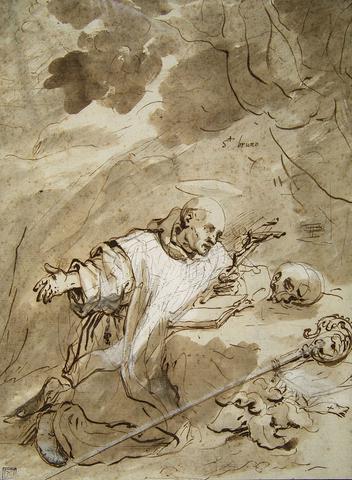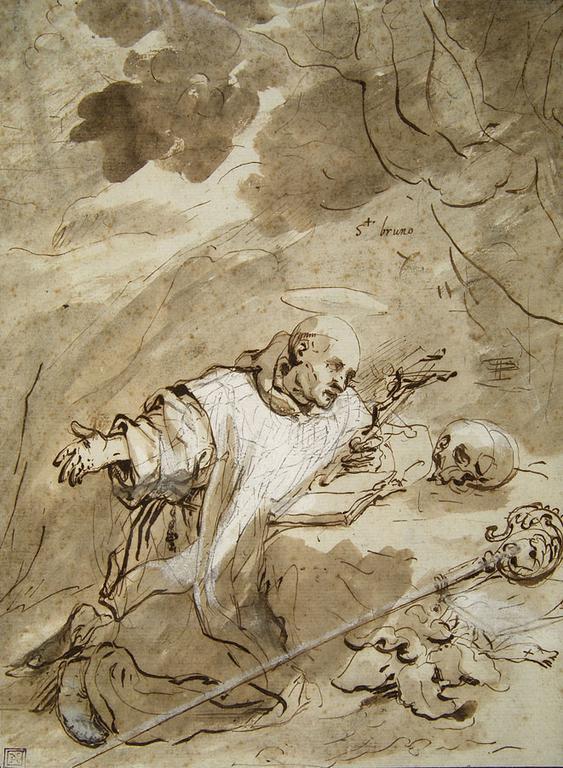
Saint Bruno en prière
France vers 1750
1750 (vers)
Plume et encre brune, rehauts de blanc, trait d’encadrement ; inscriptions « St Bruno » en haut à droite, « P. Subleirase. N° 7 » au revers ; 26 x 19,5 cm
Provenance :
collection Alfred Normand (marque de collection Lugt 153c en bas à gauche) ; Londres, Sotheby’s, 6 juillet 2010 (attribué à Jan Pynas) ; Paris, collection Le Polyptyque ; Paris, collection privée.
Saint Bruno, fondateur de la Grande Chartreuse en 1084, fut canonisé en 1623. Il est généralement représenté soit comme ici à genoux en prière dans le « désert », l’étendue sauvage autour de son ermitage, soit en vision, débout ou renversé à terre, le regard tourné vers le ciel.
Ce dessin fascinant est encore en recherche de paternité. Le sujet, et le blanc éclatant du scapulaire, expliquent une attribution ancienne à Subleyras, que contredisent une sensibilité baroquisante et la technique déliée. L’attribution récente à Jan Pynas, peintre pré-rembranesque, est moins explicable. Nous proposons, prudemment, un peintre français du milieu du 18ème siècle.
Quel qu’il soit, l’auteur de ce dessin fait preuve d’une vision très picturale, en même temps que d’un graphisme très personnel et maîtrisé, qui joue parfaitement des lavis plus ou moins denses et des rehauts de blanc. La composition est structurée par les deux diagonales de la croix et du crucifix, et l’arc de cercle qui les relie à la tête du saint et au crâne. La tonsure intégrale, conforme à la règle des Chartreux, rend d’autant plus saisissant le « face à face » avec la tête de mort, tandis que l’analogie formelle de celle-ci et de la tête de la crosse abbatiale renforce l’idée de vanité.
Alfred Normand (1910-1993), ingénieur centralien issu d’une longue lignée d’ébénistes puis d’architectes, fut de 1950 à sa mort un des grands collectionneurs, et connaisseurs, de dessins anciens en France.
